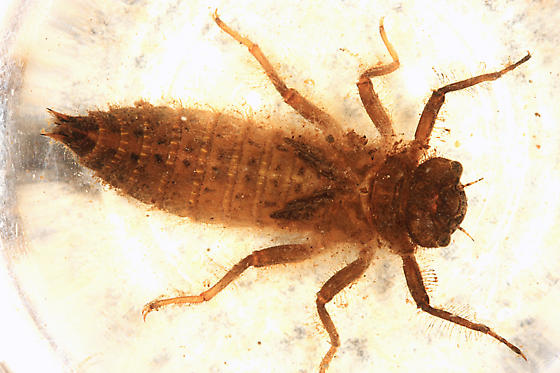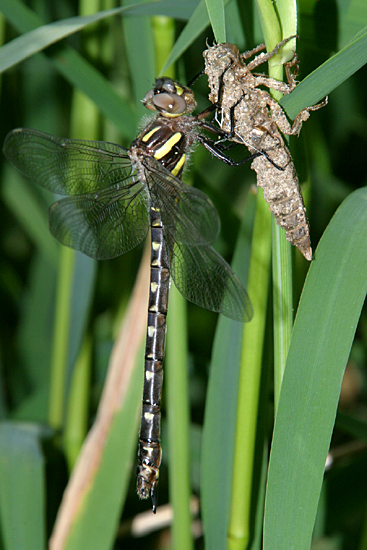
Reproduction
Conjugation (sexual reproduction) is started with the male and female coming together to mate. During this time they hang from a tree anywhere from 50 minutes to 5 hours. During this process the female will stick here ovipositor (a spike of sorts) inside of a deep pocket in the male, which is located between the abdomen and thorax. It is during that time that the females gets fertilized by the male. (Dunkle 2000)
Afterwards, the female will find some sort of aquatic environment (see habitat) to lay her eggs. The Twin-Spotted Spiketail female does so by hovering over the water and driving her ovipositor up and down creating a 'sewing machine' effect as she deposits the eggs into the water. The male Dragonfly usually stays attached while egg-laying takes place. (Dunkle 2000)
Here are the general facts about the Twin-Spotted Spiketail's
life cycle:
- Egg: placed in water to fend for themselves.

Aquatic Nymph: an amazing predator that will eat anything it
can get it's labium (pinchers) on, including insects, snails,
tadpoles, small fish, etc (see picture).
(Dunn 1996)
Terrestrial Nymph: the aquatic nymph will eventually crawl on land
and find a plant stem, stick, or branch to reside on to molt
multiple times. Depending on the conditions the nymph is in, it may
take up to 3 years for the nymph to fully develop, but after
multiple molts (10-15 instars) the nymph
eventually becomes a dragonfly.
(Berger 2004)The final instar stage, after which the nymph will
become an adult, takes place during the Spring deeming it a Spring
species.
(Corbet 1962) The picture below is of an adult Twin-Spotted
Spiketail shortly after it's last molt.
Adult Dragonfly: During this time as an adult, it will find a mate
rather quickly do to the fact that it lives for 2-3 week in this
mature state.
(Arnett
1985)
